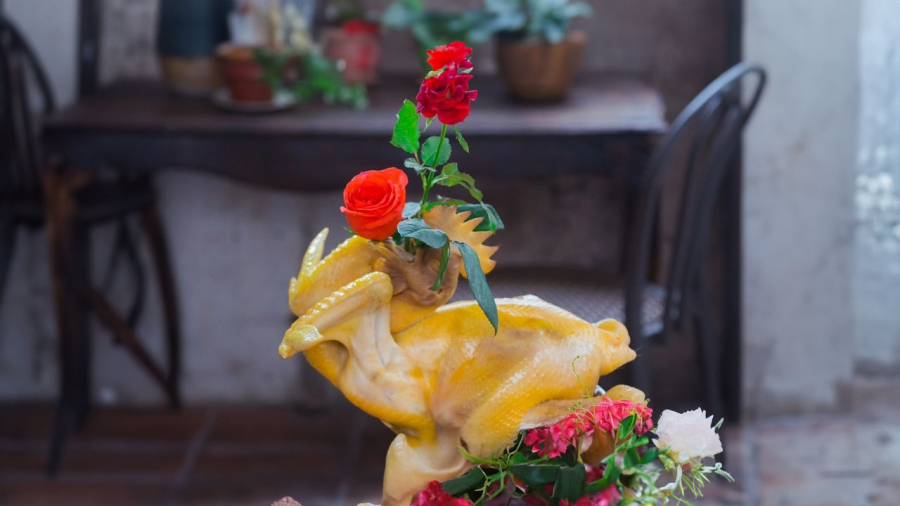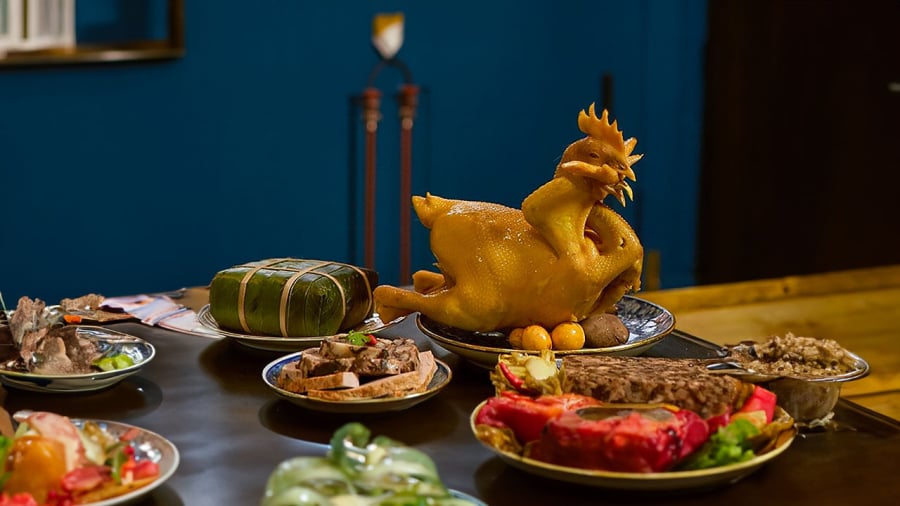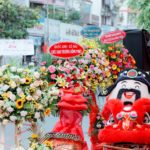Rooster worship is a popular ritual in family offerings, especially on important holidays and full moon weeks. Some families have roosters on their altars or spirit shrines every first and fifteenth day of the lunar month, as well as on any other holidays. This shows how familiar rooster worship is in the spiritual life of the Vietnamese people.

Does the rooster have to be a male?
When buying a rooster for worship, it is usually a male rooster, specifically a young male rooster that has not yet mated. This is because the belief is that an unmated male rooster is pure and represents cleanliness and respect for the offering. People avoid offering prayers with a female rooster. Perhaps this belief stems from the notion that a male rooster is “cleaner” than a female rooster. Furthermore, if a female rooster hasn’t laid eggs, it is less tasty and considered immature, and if it has laid eggs, it is no longer “clean.”
In the past, during difficult economic times, people offered prayers with a female rooster but only placed a portion of the rooster on the altar, as it was deemed disrespectful and unholy to display the entire female rooster.
Nowadays, with improved living standards, people buy whole male roosters to offer prayers, and they often choose castrated roosters or old roosters.

Should the rooster face in or face out?
According to folk belief, whether the rooster faces in or faces out does not matter. If the rooster faces out, it enhances the aesthetics of the altar and the ritual. In ancient times, offering prayers with just a piece of the rooster was acceptable, so the orientation of the rooster was not significant. This is the belief of the common people.
However, in terms of Feng Shui, the rooster should be placed facing the altar, indicating that the rooster is alert, crowing, and paying respect to the ancestors and spirits. When the rooster faces out, it indicates disrespect and rebellion. Although facing out may be more visually pleasing, when it comes to spirituality, we place the rooster on the altar as an offering, so it must face the ancestral spirits, rather than being aesthetically pleasing for the living.
In the ancient beliefs of the Vietnamese people, the male rooster serves as a bridge between the human world and the spiritual world. If the rooster faces out, it no longer fulfills the meaning of connecting. Therefore, the rooster for worship is placed facing the incense holder, symbolically representing the prayers offered by the head of the household to the ancestors and spirits.
Considerations when choosing a rooster for worship
When choosing a rooster for worship, it should be a moderately sized male rooster, avoiding long spurs indicating old age. When selecting a rooster, look for smooth feathers, a beak that does not drip water, and a bright red comb, as these are signs of a good rooster.
When preparing the rooster for worship, do not separate its legs, and instead fold the legs inward and tie them together to avoid cutting off blood circulation. Nowadays, there are professional rooster preparation services that specialize in tying the legs like a celestial rooster, so many people no longer have to worry about this.
When boiling the rooster for worship, use a wide pot, fully immerse the rooster in water, bring the water to a boil, then let it simmer. This helps prevent the rooster from cracking and ensures a beautiful appearance without blemishes. When offering the rooster, it is recommended to leave all the internal organs in the serving dish to avoid any omissions.
The information provided is for reference and contemplation purposes only.
2023 Lunar New Year Gift Ideas for Older Family and Friends
As 2021 approaches, families worldwide are gathering to celebrate the special bond between grandparents and their grandchildren. To show their love and admiration, these thoughtfully chosen gifts will bring a smile to the face of the elderly. Here, we have compiled a list of the 13 most meaningful Tet presents that can bring joy to our beloved grandparents.




































